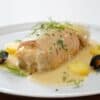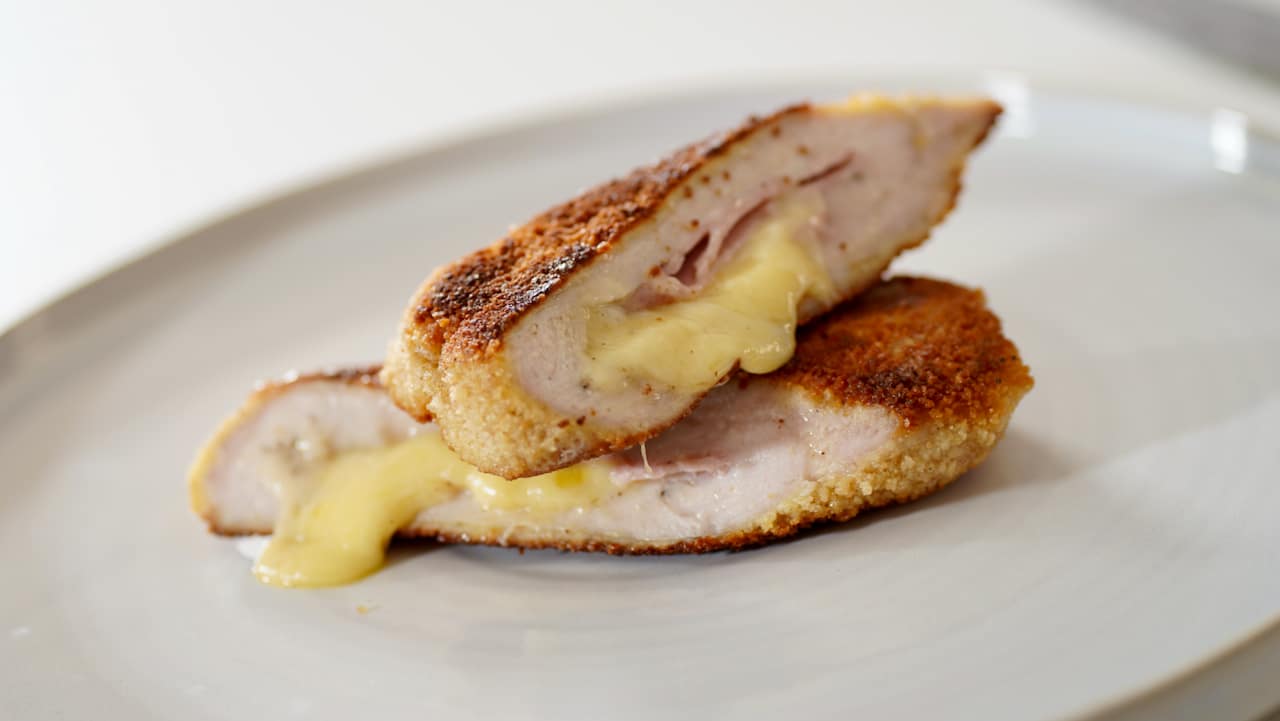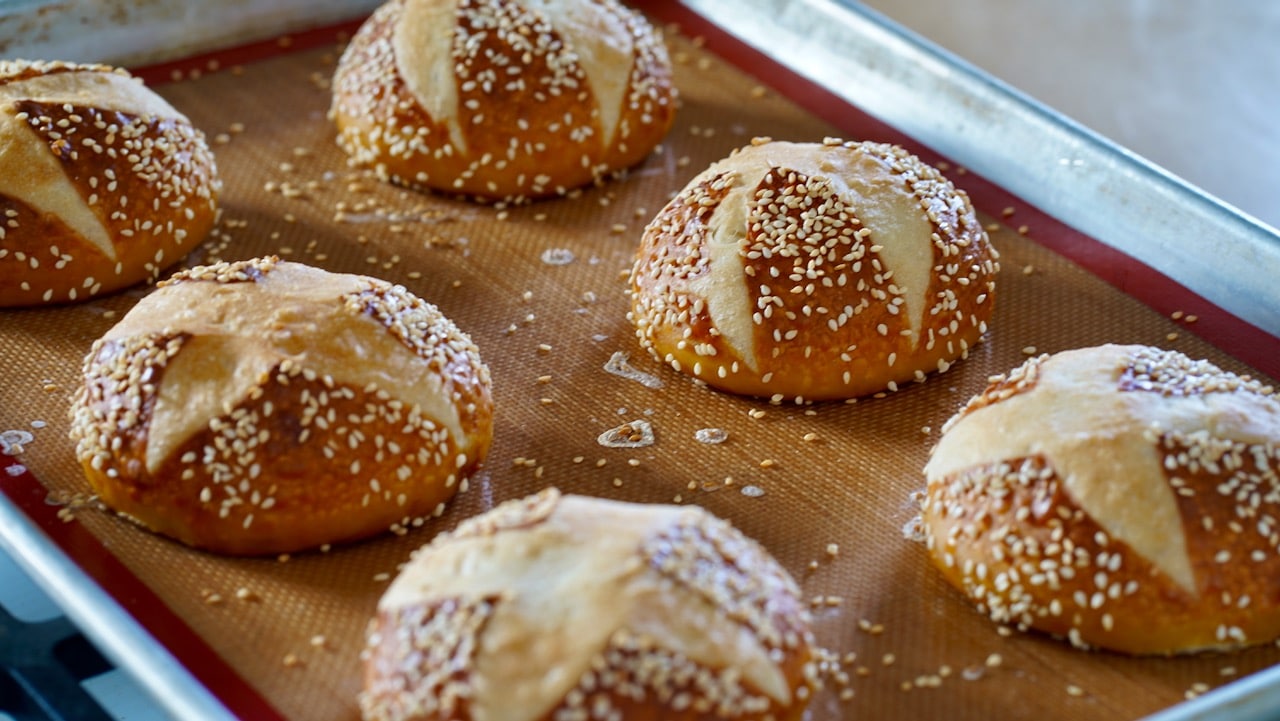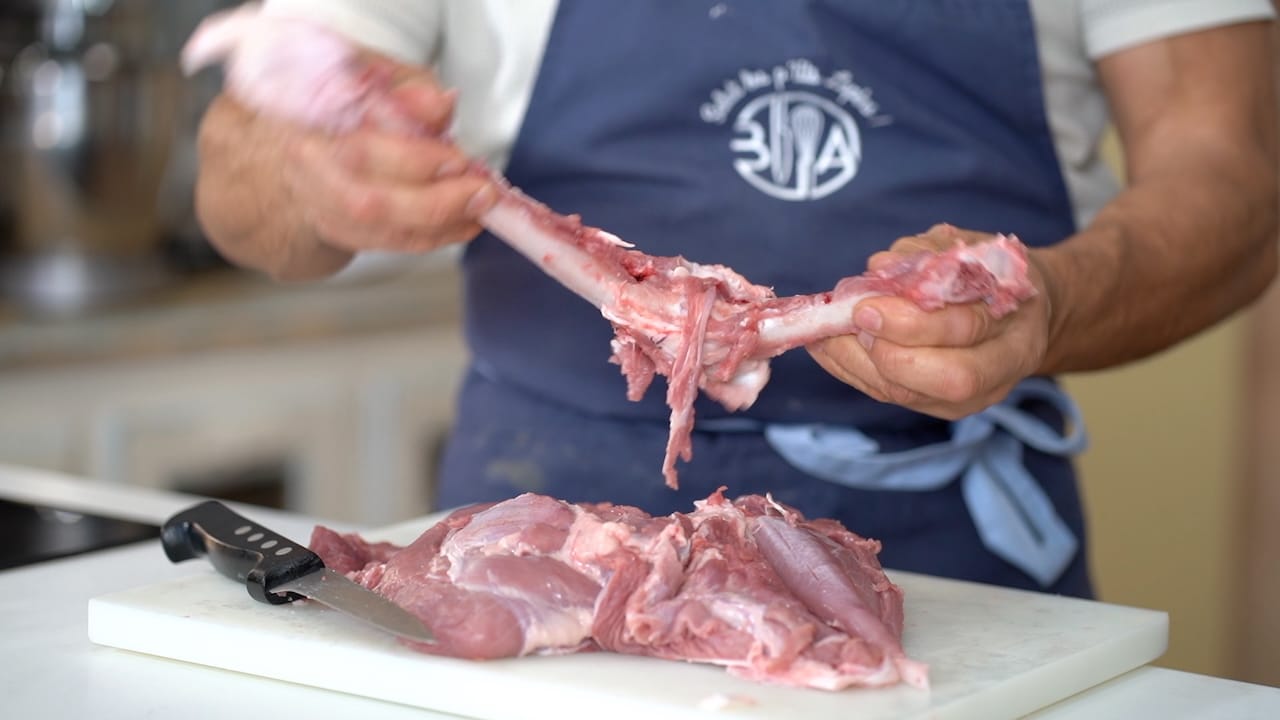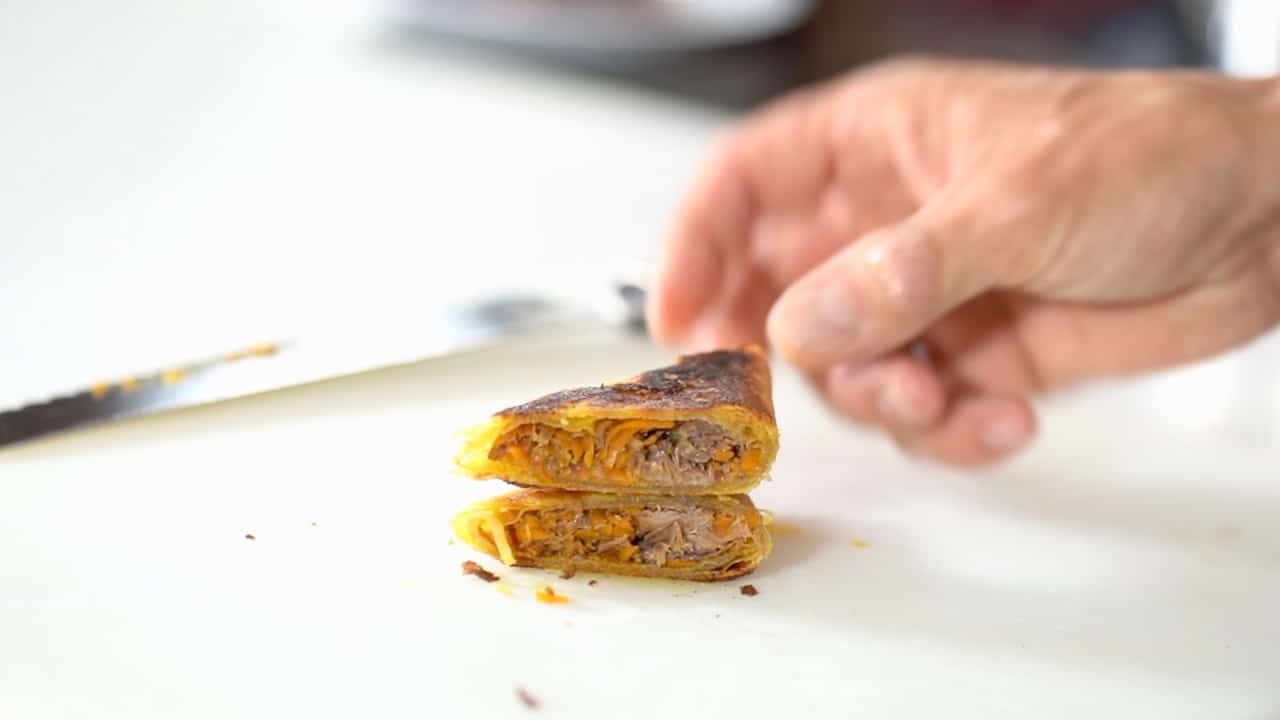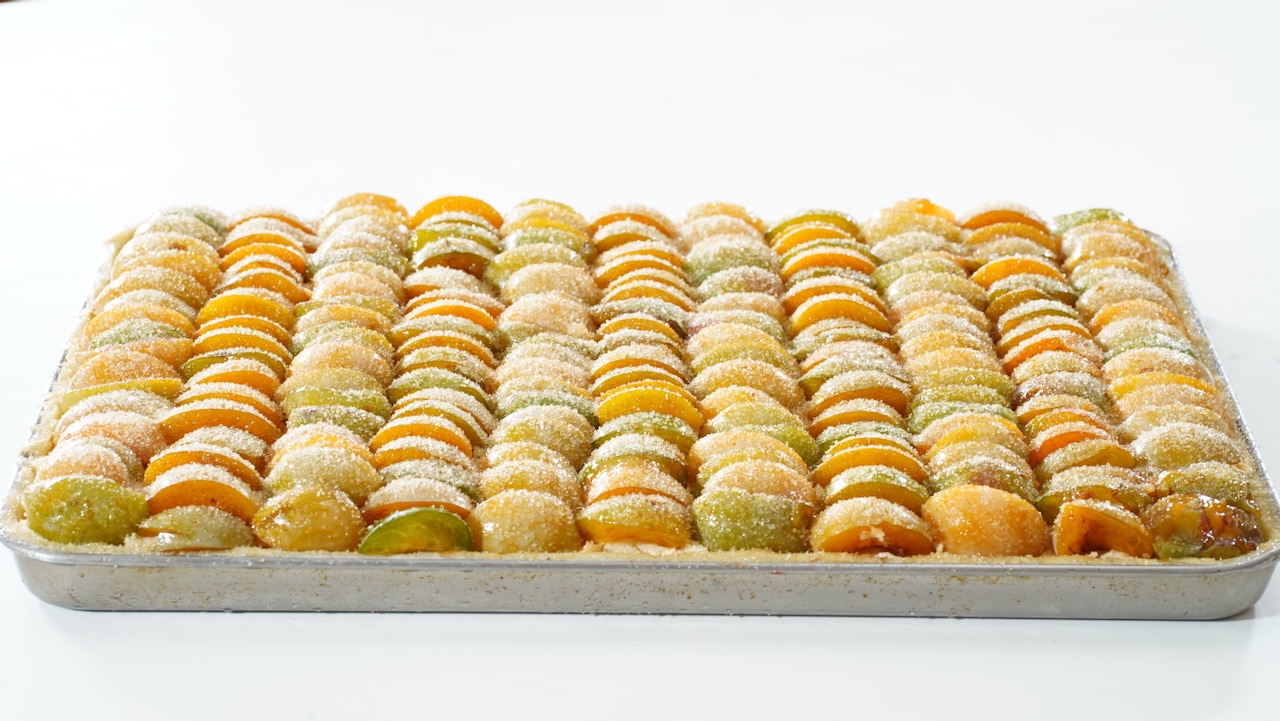Three Fish Choucroute
From 1987 to 2009, Guy-Pierre Baumann was celebrated by gastronomes worldwide as the charismatic leader of the historic Maison Kammerzel, a gem from the 14th and 15th centuries nestled at the foot of Strasbourg's breathtaking cathedral. Chef Baumann carved a lasting name for himself by daring to revolutionize a cherished Alsatian staple with his iconic “three fish sauerkraut.” Naturally, reimagining a “gastronomic monument” like traditional Alsace Sauerkraut drew its share of criticism. However, over time, the outcome spoke for itself. Baumann’s version won over the hearts of gourmets across the globe—Alsatians included.
The recipe is deceptively simple: tender sauerkraut served alongside salmon, halibut, and smoked haddock (the latter echoing the smoky notes of traditional charcuterie), all crowned with a luscious, velvety sauce inspired by beurre blanc. It is truly an honor to present my humble interpretation of this one-of-a-kind seafood dish.
Please note that the full access to this content needs a subscription: please sign up.
Maison Kammerzel's choucroute recipe
This recipe is a protected and only available for paid members. To obtain the full step by step recipe and detailed ingredients list, please sign up.
Preview the recipe
Cooking Mussels
- When cooking with mussels, it's essential to properly clean and prepare them. Heat up a sautoir, add chopped shallots, fat and wine. Add mussels, cover pan with the lid and cook on high heat for 5 minutes; shaking pan every so often.

- Drain mussels and save the cooking liquid for the fish fumet. It provides a delightful seafood flavor.

Fish Fumet
- Combine the cooking liquid from the mussels and add it to fish fumet. Reduce by half. Half of the reduced fish fumet is going to be added to the sauerkraut, and the other half to flavor up the beurre blanc. Now, if you prefer not using any fish fumet to cook sauerkraut, use it all for the beurre blanc.
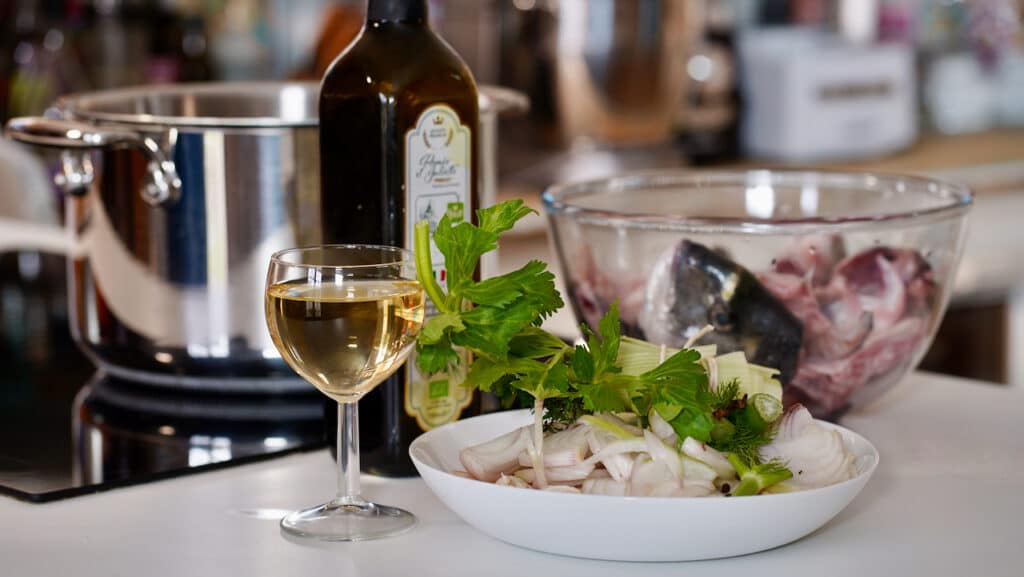
How To Skin Salmon Fillet
- Place the salmon fillet on a cutting board, skin-side down (it is easier when you deal with the whole fillet). Position the tail end of the fillet closest to you. Hold the tail end of the fillet firmly with one hand. For better grip, use a paper towel to prevent slipping. Take a small angled cut between the skin and the flesh at the tail end, just enough to create a flap of skin to hold onto. Grip the skin flap tightly with your non-dominant hand. With your knife angled slightly downward (toward the skin), gently slide the end between the skin tail and the flesh. Use a sawing motion and keep the blade as close to the skin as possible to minimize waste (grey part should be removed).

- Cut salmon filet into 4-ounces/110g scallopini.

Smoked Haddock
- Little-known cousin of cod, haddock églefin is a fish with fine and delicate flesh. Smoked Haddock is fresh, filleted Haddock that has been smoked over oak and beech wood in a special smoker oven. Check the fish fillet for any remaining bones. Skin the fish and save the smoked skin for the sauerkraut.

- Cut smoked haddock flesh on a bias into 1.8-ounce/50g portions.
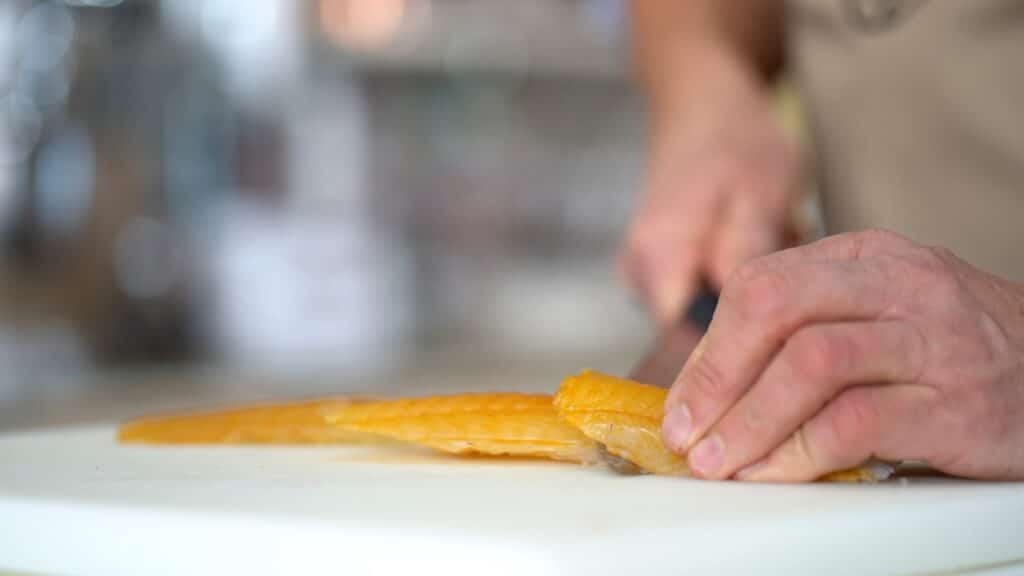
White Fish Fillet
- Divide fish into three 4-ounces/120g portions. Cut each into two 2-ounces/60g scallopini. Keep fish refrigerated.

Preparing Sauerkraut
- When cooking with fermented cabbage (sauerkraut), balancing its acidity can elevate your dish significantly. A straightforward method to achieve this is soaking the raw sauerkraut in lukewarm water for around 20 minutes. It gently reduces its tangy intensity, making the flavor more harmonious. If you'd like an even milder taste, simply repeat the soaking process.

Cooking Sauerkraut
- Sweat onions slices and garlic in fat until fragrant. Next, add half of the choucroute and pepper to the pot and give it a good stir to combine the flavors.

- Now, it's time to add the saved smoked haddock skin. Cover it with the remaining choucroute.
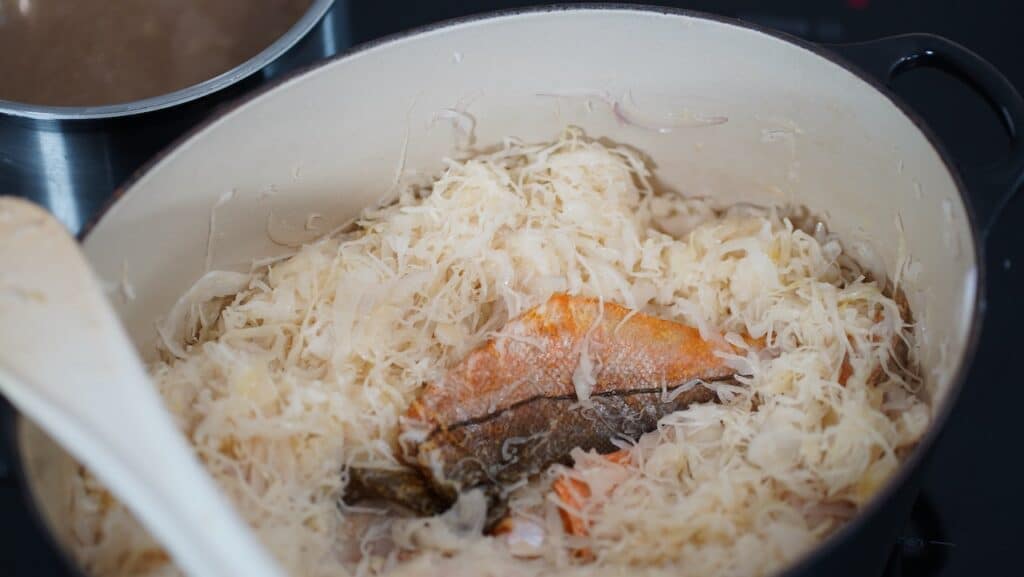
- Add the reduced fish-mussel fumet and wine, and cover the pot with a lid. Place the pot in the oven and cook at 300ºF/150ºC for 2 hours. It can also be cooked on low simmer.

- Once the dish is cooked, remove the lid and let it rest for 15 minutes on the stovetop. Remove and discard the smoked haddock skin from the sauerkraut. Allow the choucroute to cool off.
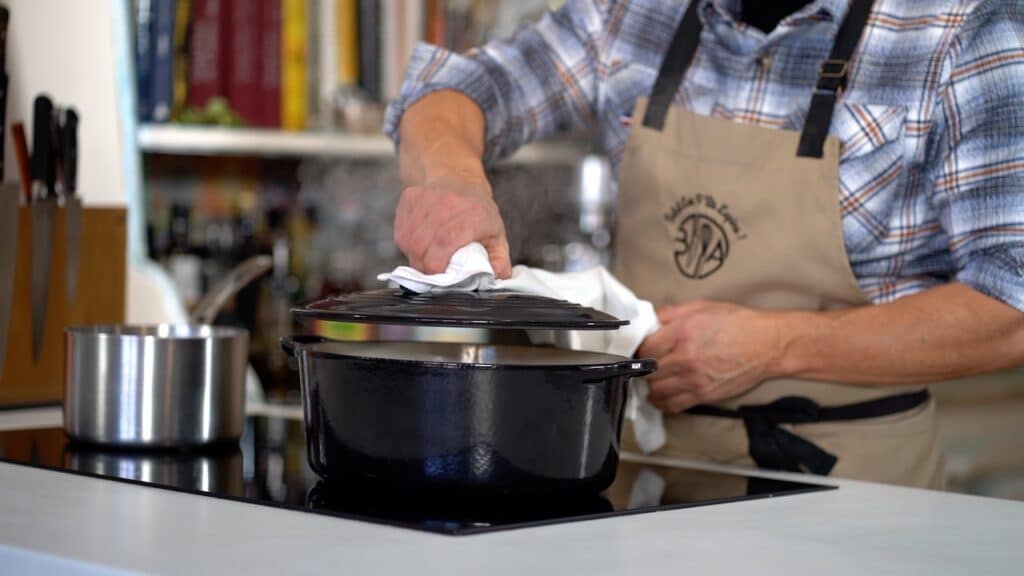
Cooking Potatoes
- Wash the potatoes thoroughly and place them in a saucepan. Add enough water to fully cover the potatoes. Bring to a boil and cook for about 30 minutes, or until they are fork-tender. Once cooked, drain the water, allow the potatoes to cool slightly, then peel off their skins. Set the peeled potatoes aside.

Beurre Blanc Sauce
- In the sautoir, combine shallots, juniper berries, peppercorns, herbs, vinegar, and wine. Bring mixture to a boil and reduce liquid by two-thirds. Add the reduced fish fumet and heavy cream, then cook until reduced by half.
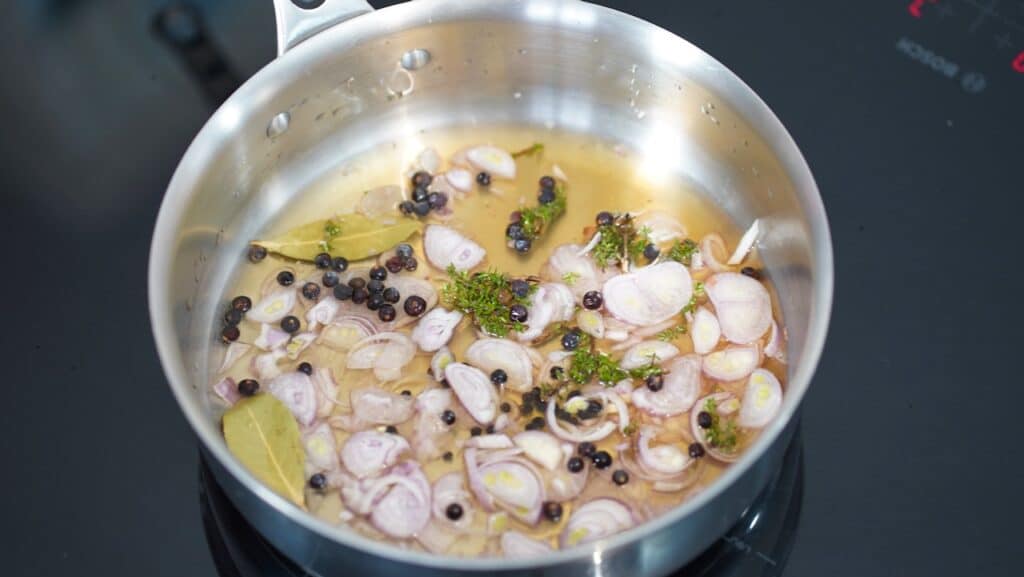
- Strain the sauce through a sieve. At this stage, the creamy shallot mixture can be refrigerated for use the following day.

Adding Butter To The Sauce
- When ready to serve, reheat the creamy shallot mixture with a splash of Riesling and gradually whisk in cubes of butter until fully emulsified. Season with salt to taste. Be sure not to let the sauce boil after adding the butter. Keep the sauce warm at ≈50ºC. If it separates, give an emulsion with your immersion blender.
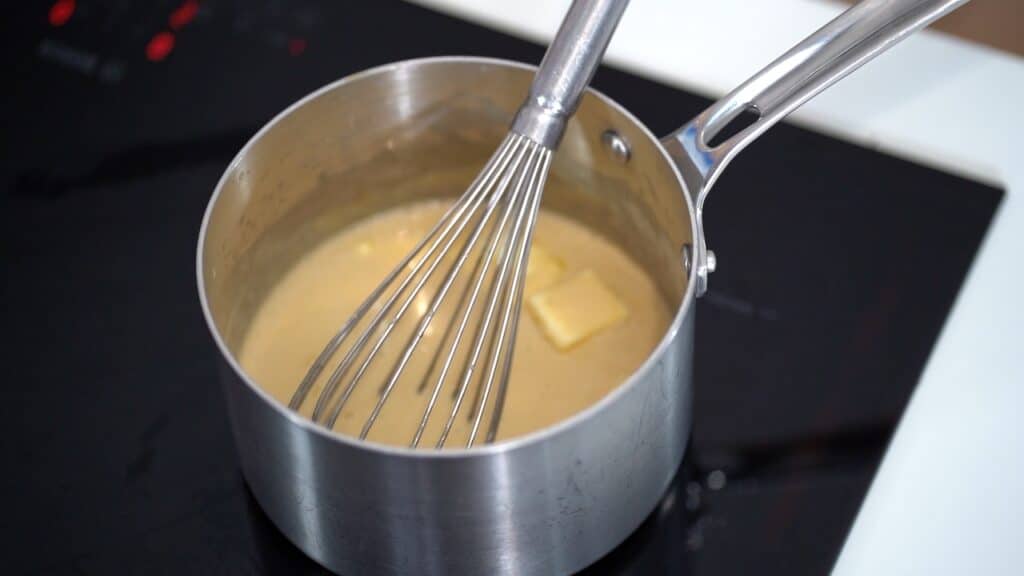
Preparing Smoked Haddock
- Soak smoked haddock portions in cold milk for 15 minutes. Sieve fish and set aside. Save or discard milk.
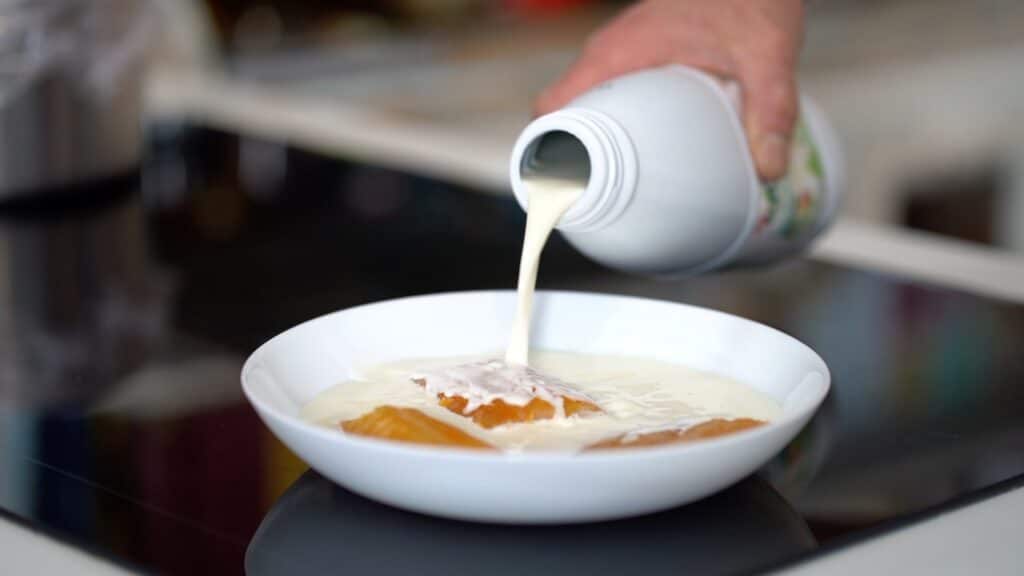
Three Fish Choucroute Montage
- Lay 3 sheets of plastic wrap on your countertop. Ensure it’s flat and free from wrinkles for easy rolling. Place the salmon scallopini in the center of the plastic wrap as the base layer. Position the smoked haddock on the left, overlapping the salmon almost entirely. This ensures the haddock will stay covered during cooking. Add the white fish fillet on the right, slightly overlapping the salmon.

- Measure 170g of chilled choucroute per serving and place it on top of the arranged fish layers. Spread it evenly along the center. Using the plastic wrap, lift the edges carefully and roll the fish and choucroute into a tight cylinder. Twist the ends of the plastic wrap to seal the roll securely, creating a firm, compact shape. Repeat with the remaining fish and sauerkraut.

- Keep the 3-fish logs refrigerated (24 hours max) until ready to cook.
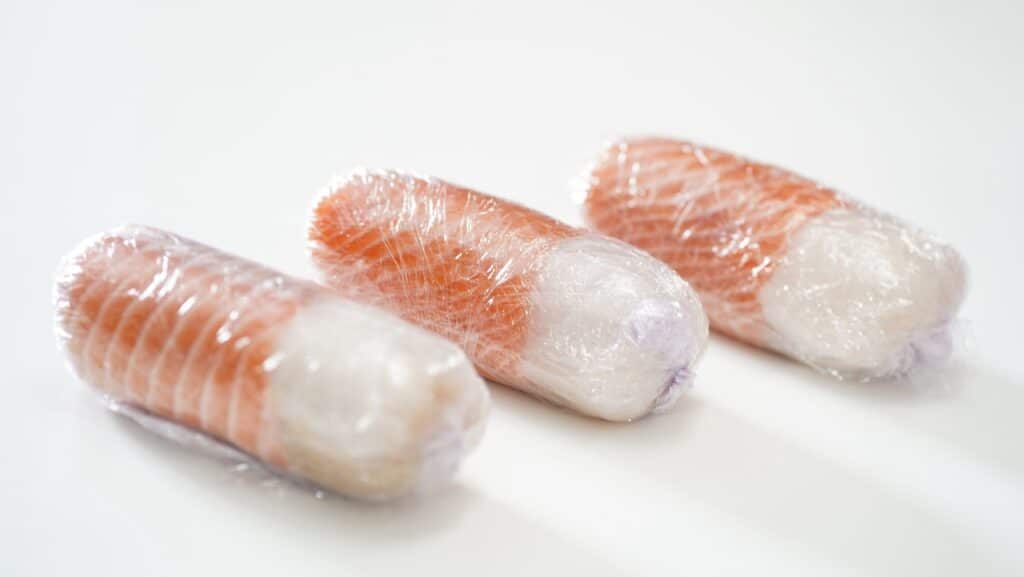
Cooking
- Set your fan oven to 350ºF/180ºC. Remove the plastic wrap from the fish-log carefully to maintain their shape. Place the logs onto a baking tray, ensuring they are evenly spaced for proper cooking. Grease the surface of the fish with melted duck fat or butter, and season with a sprinkle fleur de sel. Pop in the oven and cook for 18 minutes. Meanwhile, slowly rewarm the mussels and slices of potatoes in the same saucepan.

Plating
- Transfer each hot fish log onto warm plates. Arrange a few hot mussels and potato slices around the dish (potatoes can also be served separately). Coat the fish with beurre blanc. Garnish with minced chives and dill. Bon appétit!

Ready to discover this recipe? You're only 1 step away.
This recipe is only accessible to registered members!
Create your account to access all recipes and content of my website.
Join us now and enjoy more 800 recipes (Mostly French with European Influences, American Classics and Asian fusion)
Already register? Sign in
You might also like these contents...
Enjoy these free access recipes
Cooking techniques
Deboning A Turkey Leg
Free Recipes
Carrot-Ginger Baked Pork Samosas
Entrees
Rustic Ratatouille
Daily summer Recipe
Plum Slab Pie
Free Recipes
Chocolate Sauce
Free Recipes
Apricot Sablé Breton
Desserts
Sundae Ice Cream
Free Recipes
Peach Verbena Sorbet
Free Recipes
How To Decorate Ice Cream Cones
Entrees
How To Cut Potato Gratin
Free Recipes
Tapenade
Amuse Bouche


